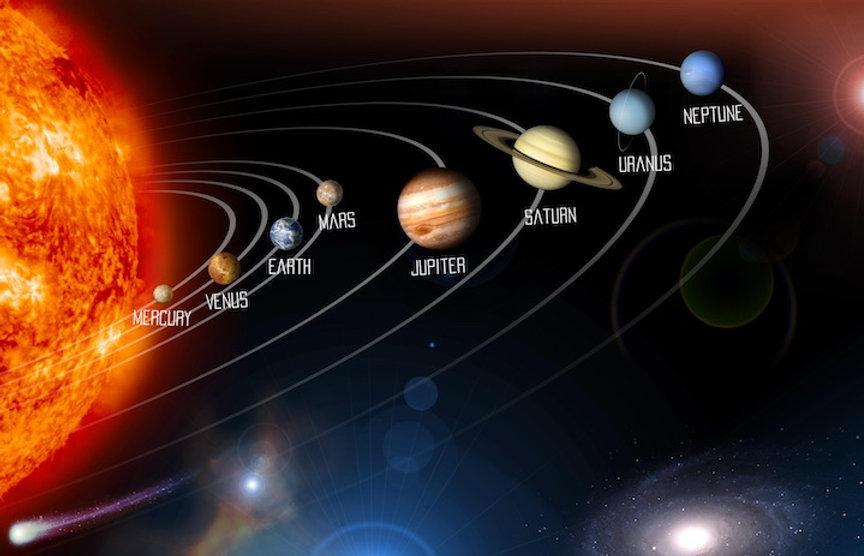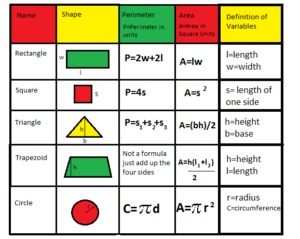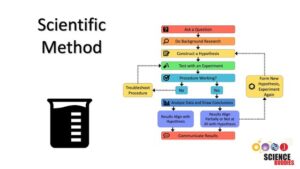By Study Rhino
The universe is vast—trillions of galaxies scattered across the cosmic canvas. But right here in our own celestial neighborhood lies something extraordinary: the Solar System. It’s home to planets, moons, dwarf planets, comets, asteroids, and so much more. Whether you’re a budding astronaut, a curious student, or simply a space enthusiast, this guide will take you on a visual journey through the Solar System, revealing the wonders of space in a way that’s easy to understand and hard to forget.
🌞 The Center of It All: The Sun
Everything in our Solar System orbits one magnificent, blazing star: the Sun. It holds 99.86% of the Solar System’s mass and powers life on Earth with its energy.
- Type: G-type main-sequence star (G2V)
- Diameter: ~1.39 million km
- Temperature: ~5,500°C (surface), ~15 million°C (core)
- Fun Fact: One million Earths could fit inside the Sun!
The Sun is composed mostly of hydrogen and helium. Through nuclear fusion, it converts hydrogen into helium, releasing tremendous energy in the form of light and heat.
🪐 The Planets: A Tour from Inner to Outer Space
The planets are divided into two main groups:
- Inner (Terrestrial) Planets: Mercury, Venus, Earth, and Mars
- Outer (Gas & Ice Giants): Jupiter, Saturn, Uranus, and Neptune
Let’s meet them one by one:
☿ Mercury: The Swiftest Planet
- Distance from Sun: ~58 million km
- Length of Year: 88 Earth days
- Surface: Rocky, cratered, similar to the Moon
- Temperature Range: -180°C to 430°C
- No. of Moons: 0
Mercury is the smallest planet and orbits the Sun the fastest. Due to its lack of atmosphere, it faces extreme temperature swings.
♀ Venus: Earth’s Twin—But Not So Friendly
- Distance from Sun: ~108 million km
- Length of Year: 225 Earth days
- Surface: Volcanic plains, thick clouds
- Temperature: ~465°C
- No. of Moons: 0
Though similar in size to Earth, Venus is a hellish world with a runaway greenhouse effect, making it the hottest planet.
🌍 Earth: Our Blue Planet
- Distance from Sun: ~150 million km
- Length of Year: 365.25 days
- Surface: Oceans, continents, diverse climates
- Average Temperature: ~15°C
- No. of Moons: 1
Earth is the only planet known to support life. Its magnetic field, atmosphere, and water cycles make it uniquely habitable.
♂ Mars: The Red Planet
- Distance from Sun: ~228 million km
- Length of Year: 687 Earth days
- Surface: Rocky, dusty, polar ice caps
- Temperature: -60°C average
- No. of Moons: 2 (Phobos and Deimos)
Mars has fascinated scientists for decades. It may have had water in the past—and possibly life.
🪐 Jupiter: The Gas Giant King
- Distance from Sun: ~778 million km
- Length of Year: 12 Earth years
- Surface: No solid surface; mostly hydrogen and helium
- Notable Feature: Great Red Spot (massive storm)
- No. of Moons: 95+
Jupiter is the largest planet and a massive gravitational force in the Solar System. Some of its moons, like Europa, may harbor subsurface oceans.
♄ Saturn: The Ringed Wonder
- Distance from Sun: ~1.43 billion km
- Length of Year: 29 Earth years
- Surface: Gas giant with icy core
- Notable Feature: Iconic ring system
- No. of Moons: 145+
Saturn’s rings, made of ice and rock, are its signature. Titan, one of its moons, has a dense atmosphere and lakes of methane.
♅ Uranus: The Sideways Planet
- Distance from Sun: ~2.87 billion km
- Length of Year: 84 Earth years
- Color: Pale blue-green due to methane
- Tilt: Rotates almost on its side (98° tilt)
- No. of Moons: 27
Uranus is an ice giant, with chilly temperatures and a unique spin axis. Scientists believe a collision caused its extreme tilt.
♆ Neptune: The Windy Blue Giant
- Distance from Sun: ~4.5 billion km
- Length of Year: 165 Earth years
- Surface: Ice giant with supersonic winds
- Color: Vivid blue
- No. of Moons: 14
Neptune is known for its violent storms and deep blue hue. Triton, its largest moon, orbits in the opposite direction, suggesting it was captured.
🌑 Moons, Dwarf Planets & Other Celestial Bodies
Our Solar System has more than just planets! Let’s explore its supporting cast.
🌕 Moons
There are over 200 known moons, each unique:
- Earth’s Moon: Drives tides and was the first extraterrestrial body visited by humans.
- Io (Jupiter): Most volcanically active body in the Solar System
- Europa (Jupiter): Icy surface with possible subsurface ocean
- Titan (Saturn): Thick atmosphere, liquid methane lakes
- Enceladus (Saturn): Ice geysers, potential for life
🪐 Dwarf Planets
In 2006, Pluto was reclassified as a dwarf planet. These bodies orbit the Sun but don’t “clear their orbit.”
- Pluto: Heart-shaped glacier, icy surface, 5 moons
- Ceres: Largest object in the asteroid belt
- Eris: Slightly smaller than Pluto, located in the scattered disk
- Haumea: Egg-shaped, rapid rotation
- Makemake: Reddish hue, in the Kuiper Belt
☄️ Asteroids & Meteoroids
- Asteroids: Mostly rock or metal, mainly found in the Asteroid Belt between Mars and Jupiter
- Meteoroids: Small rocky or metallic bodies
- Meteor: Meteoroid that enters Earth’s atmosphere (shooting star)
- Meteorite: Survives the atmosphere and lands on Earth
🌠 Comets
Comets are icy bodies from the outer reaches (like the Kuiper Belt or Oort Cloud). When they approach the Sun, their ices vaporize, creating stunning tails.
- Famous Example: Halley’s Comet (visible every 76 years)
- Parts: Nucleus (solid core), coma (gas cloud), tail (always points away from Sun)
🚀 Human Exploration of the Solar System
The quest to explore our Solar System began with telescopes and now includes rovers, probes, and even plans for human travel.
Key Missions:
- Voyager 1 & 2: Launched in 1977, now in interstellar space
- Cassini: Explored Saturn and its moons (1997–2017)
- Juno: Studying Jupiter’s atmosphere
- Perseverance Rover: Exploring Mars since 2021
- James Webb Space Telescope: Offers deep views into the early universe
Fun Fact:
Voyager 1 carries the Golden Record—a time capsule with sounds and images from Earth, intended for any intelligent life that may find it.
🔭 Visual Tools for Exploring the Solar System
Let’s not forget how we see these wonders from Earth:
- Telescopes: Optical, radio, and space telescopes like Hubble
- Planetariums: Offer 3D sky experiences
- Apps & Websites:
- NASA Eyes on the Solar System
- Stellarium
- SkySafari
These tools allow students to visualize orbits, planetary motion, eclipses, and even simulate space missions!
🧠 Did You Know?
- Jupiter’s gravity acts like a cosmic vacuum cleaner, pulling in potential impact threats.
- A day on Venus is longer than its year!
- Neptune has supersonic winds—faster than 2,000 km/h.
- Earth’s Moon is drifting away by 3.8 cm per year.
- There may be a mysterious “Planet Nine” far beyond Neptune.
📚 Why the Solar System Matters
Studying the Solar System helps us:
- Understand Earth’s climate and geology
- Explore the possibility of life elsewhere
- Prepare for future space missions
- Inspire future generations of scientists and engineers
📸 Wrap-Up: A Solar System Snapshot
| Planet | Type | Moons | Surface Temp. | Notable Feature |
| Mercury | Rocky | 0 | -180°C to 430°C | Fastest orbit |
| Venus | Rocky | 0 | ~465°C | Thick atmosphere |
| Earth | Rocky | 1 | ~15°C | Life-supporting |
| Mars | Rocky | 2 | ~-60°C | Red color, dust storms |
| Jupiter | Gas Giant | 95+ | ~-145°C | Great Red Spot |
| Saturn | Gas Giant | 145+ | ~-178°C | Rings |
| Uranus | Ice Giant | 27 | ~-224°C | Tilted axis |
| Neptune | Ice Giant | 14 | ~-214°C | Fastest winds |
🚀 Final Thoughts from Study Rhino
The Solar System is more than just a collection of celestial objects—it’s our cosmic classroom. By exploring it, we’re not just learning about the stars and planets; we’re discovering our place in the universe. Keep looking up, asking questions, and feeding your curiosity. After all, today’s learners could be tomorrow’s astronauts.
Until next time,
Stay curious, stay rhino-strong! 🦏💫




